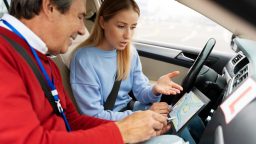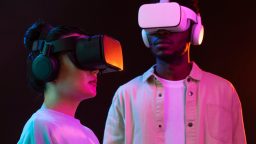Robotics is no longer confined to science fiction or industrial factories; it’s steadily making its way into our daily lives, revolutionising everything from how we work to how we interact with technology. From autonomous vacuum cleaners to surgical robots, the role of robotics in daily life has expanded in recent years, and the possibilities seem endless. In this article, we’ll explore the current uses of robotics in everyday life and take a look at the exciting trends that could shape the future of robotics.
- Robotics in Household Tasks
One of the most visible ways robots are making our lives easier is through household tasks. Robots designed for home use have become more sophisticated, making chores that once took up valuable time much simpler.
- Robot Vacuums: Devices like the Roomba have revolutionised the way we clean our homes. These autonomous vacuums can navigate around furniture, avoid obstacles, and clean floors without any input from the user. Many models can be scheduled to clean at specific times, and some even allow you to control them via smartphone apps.
- Robot Lawn Mowers: Similar to robot vacuums, robot lawn mowers, such as the Husqvarna Automower, autonomously mow your lawn. These mowers work quietly and efficiently, cutting the grass in patterns that ensure an even and neat result, saving you hours of work each week.
- Smart Kitchens: Robotics has also found its way into the kitchen. For example, robotic chefs like Moley can prepare full meals by following pre-programmed recipes. While still in development, these robots could eventually offer a hands-off cooking experience, enabling people to enjoy fresh meals with minimal effort.
- Robotics in Healthcare
In the healthcare sector, robotics has brought about significant advancements that are transforming patient care, surgery, and rehabilitation.
- Surgical Robots: One of the most groundbreaking applications of robotics in healthcare is in surgery. Robotic systems like the da Vinci Surgical System allow surgeons to perform minimally invasive procedures with greater precision and control. These systems offer smaller incisions, reduced recovery times, and improved patient outcomes.
- Robots in Rehabilitation: Robotic exoskeletons are helping individuals with mobility impairments regain movement. These wearable robots are designed to assist people with physical disabilities, offering support and helping them perform actions like walking, standing, or sitting. Companies like ReWalk are leading the way in developing these technologies for rehabilitation purposes.
- Robotic Nurses: Robots are also being introduced in hospitals to assist with tasks such as delivering medications, transporting supplies, and even interacting with patients. Robots like Pepper, a humanoid robot, are being used to comfort patients, answer questions, and monitor their conditions.
- Robotics in Transportation
Self-driving cars and drones are two areas of robotics that have captured the public’s imagination, and they have the potential to completely change how we travel and transport goods.
- Autonomous Vehicles: Self-driving cars are already being tested on roads by companies like Tesla, Waymo, and Uber. These vehicles use advanced sensors, cameras, and AI to navigate without human input. While fully autonomous cars are not yet commonplace, they are quickly becoming a reality, and they promise to make travel safer, reduce traffic, and transform transportation systems.
- Drones for Delivery: Drones are becoming increasingly popular for delivering packages, especially in areas where traditional delivery methods are impractical or costly. Companies like Amazon and UPS are exploring the use of drones for fast, efficient, and contactless delivery. In the near future, drones could deliver everything from groceries to medical supplies, making life more convenient and efficient.
- Robotics in Retail and Customer Service
Robots are not only improving efficiency in traditional industries, but they are also enhancing the customer experience in retail and service industries.
- Retail Robots: Robots are now being used in stores for tasks like inventory management, customer assistance, and even checkout. For example, robots like Simbe Robotics’ Tally can scan store shelves to track inventory levels and ensure that items are properly stocked. These robots help retail employees save time and focus on customer service, while also improving operational efficiency.
- Customer Service Robots: Humanoid robots are being used in customer service roles at airports, hotels, and shopping malls. For example, robots like SoftBank’s Pepper are deployed in various locations to greet customers, answer questions, and assist with tasks. These robots help businesses provide quick and effective customer service, especially during peak hours.
- Robotics in Education
Education is another sector where robots are being used to enhance the learning experience. From teaching assistants to interactive learning tools, robotics is helping students of all ages engage with educational material in new and exciting ways.
- Robotic Teaching Assistants: Robots like NAO and Pepper are being used in classrooms to assist teachers and engage students. These robots can help with lessons, encourage participation, and even teach subjects like programming or STEM. They provide an interactive and engaging way for students to learn, making education more enjoyable and effective.
- STEM Education for Children: Robots are also being used to teach children about robotics and programming. Robotics kits, such as LEGO Mindstorms and VEX Robotics, allow students to build and program their own robots, sparking interest in STEM fields and helping develop critical thinking and problem-solving skills.
- Future Trends in Robotics
As technology continues to advance, the role of robots in our daily lives will only increase. Here are some of the future trends to watch for in robotics:
- Human-Robot Collaboration: In the future, we can expect more robots working alongside humans in both professional and personal settings. Cobots (collaborative robots) are designed to work with humans safely and efficiently, complementing their skills and performing tasks that would be too dangerous or repetitive for people.
- Personal Assistants and Companions: As robots become more sophisticated, we may see the rise of personal robots that can assist with daily activities, provide companionship, and even monitor health. These robots could help elderly individuals live independently, assist with childcare, or provide help around the house.
- AI-Powered Robots: Artificial intelligence is set to make robots smarter and more capable of adapting to complex environments. In the future, AI-powered robots could perform tasks like providing medical diagnoses, solving real-world problems, and even making decisions based on data analysis.
- Robotics for Environmental Protection: Robots will also play a role in addressing environmental challenges. Robots could be used to monitor pollution, clean oceans, or even plant trees, helping tackle global environmental issues in innovative ways.
Conclusion
Robotics is already transforming various aspects of our daily lives, from the way we clean our homes to the way we receive healthcare and get around. As robotics technology continues to evolve, the possibilities for innovation seem limitless. The future of robotics holds the promise of smarter, more efficient machines that can collaborate with humans in ways we never thought possible. Whether in healthcare, education, or transportation, robots will undoubtedly play a significant role in shaping the world of tomorrow.





